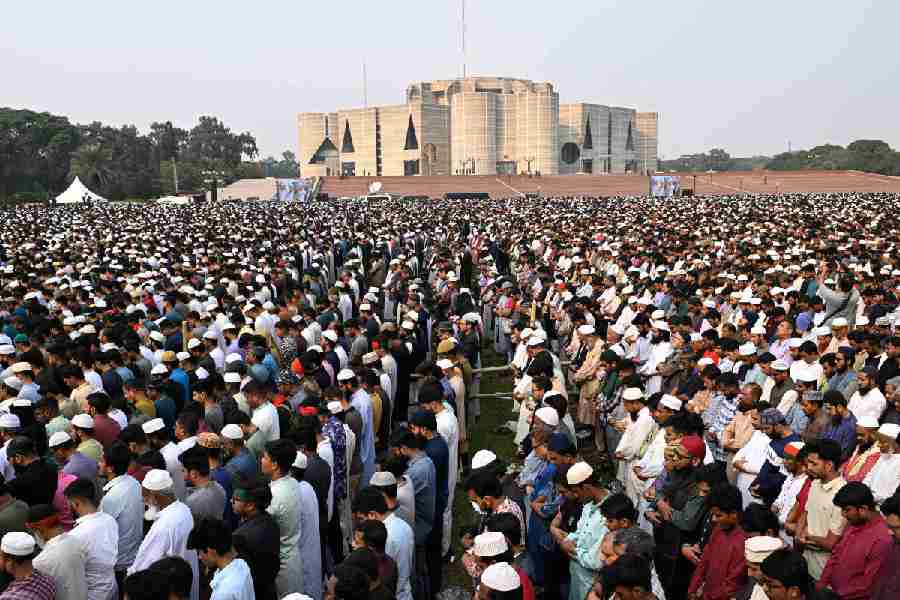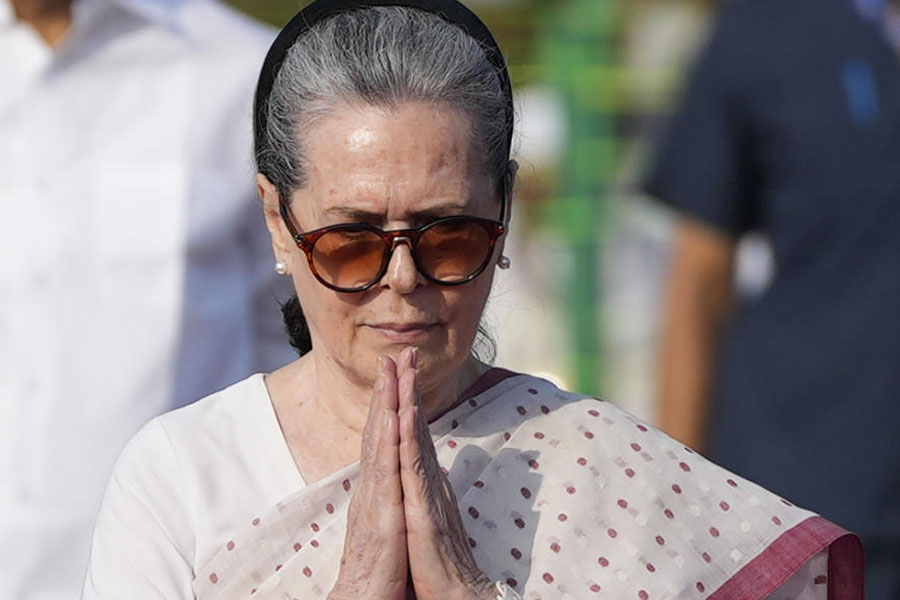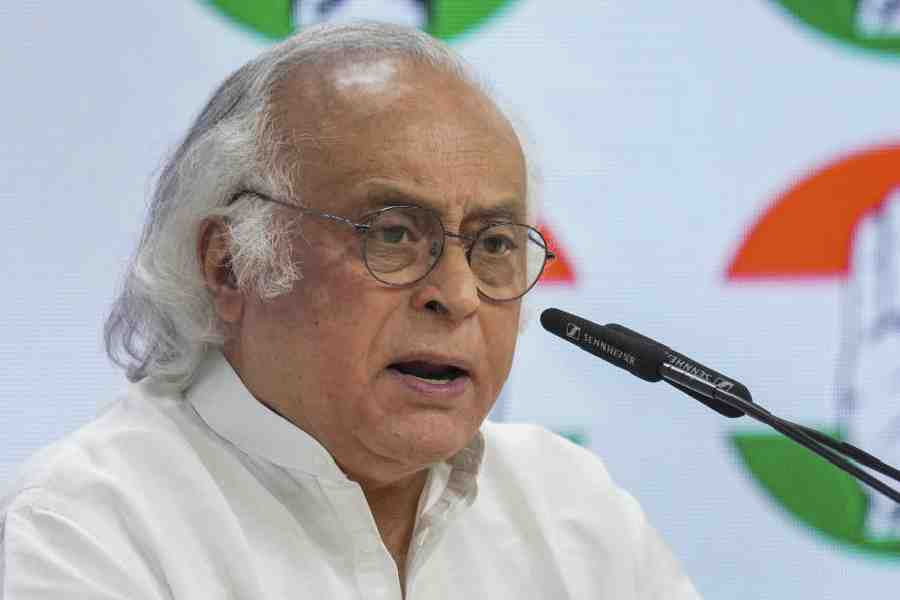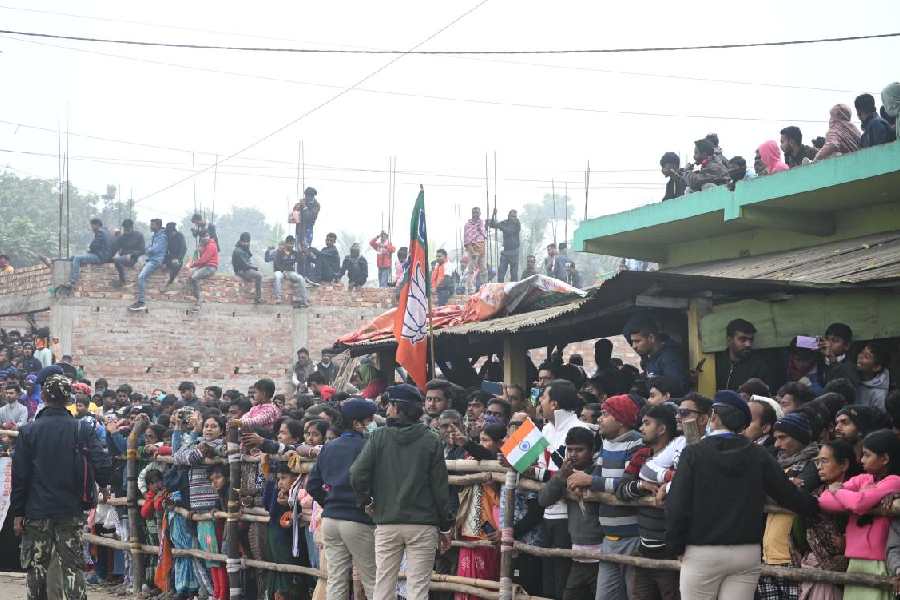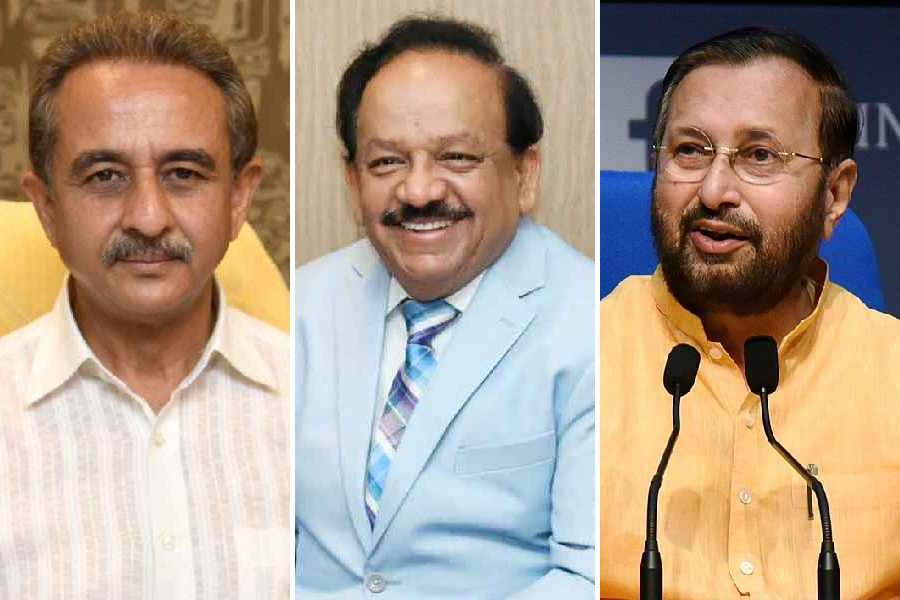 |
| Japanese fleet in the Bay of Bengal. (PTI) |
Port Blair, Sept. 6: The sharp voice rang out across the verandah that overlooks Minnie Bay through which vessels sail to dock in Port Blair’s military and civilian harbours: “Hey Masakatsu, you here too?”
Masakatsu is the first name of the Japanese defence attaché in New Delhi. The Singaporean defence attaché was so pleased to see him that he could barely conceal his delight. They have bumped into each other on a terrace of the Fortune Bay Island Hotel that offers a view so pleasing that it is depicted on the Indian 20-rupee currency note.
Soon, they are joined by the Australian defence attaché who stops over but has to excuse himself because he is keeping a fleet commander company over breakfast.
Among the officials most in demand are an Indian Navy captain, who tells the international gathering that there’s a cocktail overdue, and an American officer who is planning airlifts to warships in the Bay of Bengal.
With a wink, the Australian asks the Singaporean if his wife was around. “Is that so? I didn’t know I could bring her along.”
The Singaporean was surprised, and then broke into a wide smile while pulling a punch at the Aussie. That was just a joke.
But there is nothing funny about this venue for an international meet of navies.
They are all here on serious business, the business of building an Indian Ocean Navy, for that is what Malabar 07-02 is likely to shape into in future years.
Speculation centres around it maturing into a coalition that will take on China, which has a listening post on the Cocos Islands, about 40 nautical miles north of here.
But for the assembled military personnel here, it is only the task-at-hand that matters. The banter is only a manifestation of the friendships that navies brought together here by America and India are striking.
Overhead, Chetak helicopters and Dornier aircraft of the Indian Navy are circling to land. Many of the foreign naval personnel are not familiar with these machines. An Indian naval officer obliges by identifying them.
Histories fade as the navies of five countries – the US, Australia, Japan, Singapore and India — with diverse pasts meet on the high seas between here and Vishakhapatnam.
What started as war games on the Malabar coast in the Arabian Sea with the Americans 13 years ago has now grown into a coalition off the Coromandel Coast in the Bay of Bengal. But the name of the war games has remained unchanged.
The Malabar on the Coromandel today is a hotly debated and disputed with the Left’s protest rallies registered in almost every discussion here. But nobody wants to comment on the record. They are more comfortable discussing military matters.
Though Malabar 07-02 are the biggest international exercise and the most complex war games that any wing of the Indian military has held, it is reluctant to speak about what is going into it.
The defence ministry is right now, even as the Malabar war games are on, more keen that attention shifts to the drills with Russia, that are to be held later this month in which contingents of the Indian Army and the Indian Air Force are involved. Next month, the India army will hold basic exercises with China that rank very low in a scale of complexity.
Away from the politics of the war games – that hover mostly around the China factor -- the discussions deal with operational matters. Scenarios for the Malabar 07-02 cover battles that could be fought in three dimensions: underwater, on the surface and in the air.
Tomorrow, the fleet commanders of the five countries will meet onboard the USS Kitty Hawk, the lead ship of the US Pacific Command’s Seventh Fleet.
The Seventh Fleet commander, Admiral Doug Crowder, arrived here this afternoon and preferred to fly into the Kitty Hawk almost immediately afterwards, instead of staying on in Port Blair for an evening cocktail in a shady cove that the Indian Navy had planned for him.
Participants in the wargames are apparently unconcerned on all the talk of this being a nascent anti-China coalition. That, again, to warriors, is a political construct. As naval personnel sailing in warships, diving in submarines and/or shooting off flight decks, they are concerned merely with the immediate task in hand and acting on orders.
What they do cherish, however, is the new friendships that they strike. That is a feature of navies probably the world over. Only on the rare instance do naval meets such as this one become political issues. As an Australian officer put it: “Who is to keep track of how many times we meet and have fun in international waters?”





